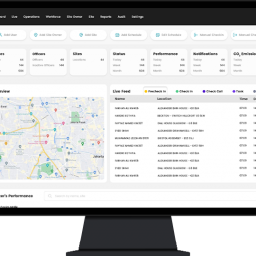Your state may soon have a predictive scheduling law. Is your employee schedule in order? This piece will go over ten of the practices covered by these “fair workweek,” “stable scheduling,” and “fair scheduling” legislation.
Of course, consistent employee work scheduling has an impact on more than just compliance. It is essential to the company’s culture. Effective scheduling techniques boost engagement, satisfaction, and retention. Bad scheduling, on the other hand, increases turnover and generates unhappy staff. Employees whose lives are constantly disrupted owing to bad scheduling make it difficult for any organization to thrive.
Let’s go through 10 employee shift planning rules that are included in several of these legislation.
Rule no.1: Good Faith Estimate of Employee Schedules
Companies must provide new employees with a reasonable estimate of their work schedule. Schedules must be somewhat accurate, and employers are frequently obligated by these estimations. Whenever something changes, the employer must notify the employee 14 days before the change becomes effective. Employers are required to provide schedule estimates on or before the first day of work.
Rule no.2: Prior Notice of Schedules
Managers must also post timetables (and any revisions) in advance.
Some fair workweek rules demand 14 days before the first shift, while others require 21 days. Employers who need to make adjustments may be required to pay the employee more if they do not provide advance notice. Employers who follow this one rule will avoid a slew of issues.
Rule no.3: Employee Schedule Requests
Predictive work scheduling legislation normally permits employees to provide their employer schedule preferences without consequences. Employers must make a genuine attempt to collaborate with the employee. This does not mean that the company must forego coverage in order to satisfy the employee’s request, but it does indicate that businesses must strive to accommodate wherever possible. Workers can specify where they want to work, how many hours they want to work, what shifts they want to work, and when they don’t want to work.
- Preferred location
- Preferred shifts
- Desired number of hours
- Desired time not to work
Rule no.4: Limits on Additional Hours
While it is critical for employees to have predictable scheduling stability, there are also business requirements. Companies who are in a difficulty or have an MIA employee have few choices for replacing a vacant shift. Short-term adjustments to a shift schedule are typically prohibited under scheduling legislation. As a result, the employer is unlikely to be able to call for a replacement without incurring a penalty. Employers should preserve a volunteer list as a best practice. The more specific you are, the better. Which employees would like to work more hours? When will they be available? It should be noted that the business must still adhere to any fines for last-minute adjustments, but at the very least, the management knows which employees are available and desire the hours.
Rule no.5: Offer Vacant Shifts to Employees First
- First, additional hours must be offered to current employees.
- Workers must be given 24 hours notice before accepting an additional shift.
- It makes it tough to fill sudden openings with temporary help.
Rule no.6: Schedule Change Notice
Companies must provide employees advance notice of any scheduling modifications. Scheduling adjustments can occur in a time frame shorter than 14 days. Nonetheless, most scheduling laws demand at least a 24-hour notice.
Certain shift scheduling rules compel employers to provide employees the option to accept or decline shifts. Others, on the other hand, require the employer to pay a premium, with no right of refusal for the employee.
Rule no.7: Premium Pay for All Changes
Predictability pay, sometimes known as “premium pay,” is intended to prevent employers from reducing a worker’s scheduled hours and, thus, their payment. Consider an employee who typically works 26 hours per week. Due to decreased business demand, the employer cancels some shifts. The employer may be required by law to pay for half of the originally scheduled hours.
Another example of premium pay is when an employee who is scheduled to work extra hours must be compensated. Assume a management requests that an employee stay another 2 hours. The employer may be required by law to pay them for 2 hours plus 1 hour of premium pay.
Rule no.8: Required Rests and a Ban on Clopenings
Employee scheduling restrictions limit the number of hours that can be worked in a day. Many employers also have mandated rest times between shifts. These rest times are typically established at 8 or 10 hours between the end of one shift and the start of the next.
This prohibits the technique known as clopening. A clopening occurs when an employee works a closing shift and then immediately begins an opening shift. This happens more frequently in the restaurant and hotel industry than in other industries. Needless to say, it’s a nightmare for staff, resulting in burnout and high turnover.
Rule no.9: Recordkeeping and Assumed Guilt
When an employee accuses an employer of misconduct, the defendant (employer) is not considered “innocent until proven guilty.” Unless the employer provides sufficient proof of compliance, courts often assume employer guilt. This means that using paper documents and keeping manual records puts you at risk in the event of a dispute.
Companies should use automatic shift scheduling software that keeps track of changes, notices, and employee reactions. A computerized system makes it simple to access time and labor information and run reports.
Remember, having the records is useless if you can’t find them!
Rule no.10: Notice of Employee Rights & Anti-Retaliation
Employees must be informed of their legal rights under secure employee scheduling laws. Employers are obligated to offer notification upon hire, in addition to a workplace fairness poster. In the employee handbook, for example. Employers can accomplish this digitally using an employee portal.
Employers are prohibited from penalizing employees who assert their rights, as is the case with other workers’ rights. This includes refusing to work shifts with short notice and expressing schedule preferences.

















